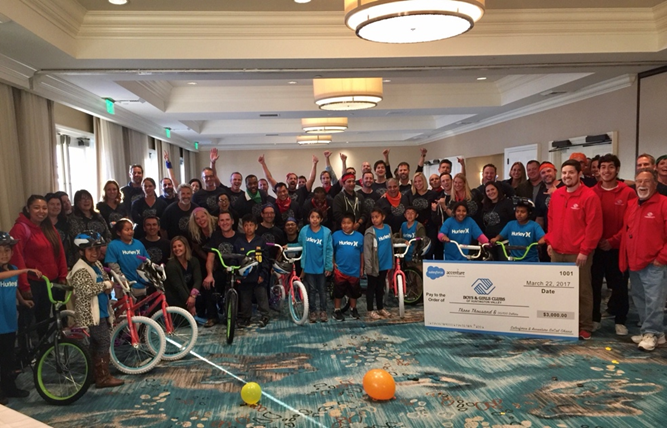Do you want to spend hours of your workday in a meeting where the presenter drones on about a topic with nothing more than a one dimensional sheet of bullet points? No one does. Employing just a few ideas to engage and educate an audience will produce a fun and informative meeting that is anything but just a list of one dimensional points.
Make It About Them
Ask the attendees why they should attend and listen. The reason a human resource representative is attending may not be the same as why the customer service supervisor or accounting manager will be present.
The question asked should get a response quite individual to each person. How do you think the new skills and information to be discussed in the meeting will benefit your company or department? The query could be e-mailed ahead of time to get the attendees thinking about what they would like to learn from the upcoming meeting or presentation.
Yes, sometimes a few will reply that they are only attending, because they are being forced. These individuals probably need the meeting and its topics more than anyone else, so consider these attendees a challenge.
If you have a few people who feel they have no intrinsic reason to be at a meeting you will need to tell them why they should be sitting there. Get personal. Tell a story about your career and how the topic helped you solve a problem.
Tell the opposite story about a failure and what you learned after the process. Showing vulnerability will help the audience connect to you. Failure or embarrassment is something we can all relate to.
Depending on the topics being covered the information may help those reluctant sorts earn a certification, add something new on a resume or take a step toward the position they really desire.
Remember The Level Of Expertise
Do not make the topic too easy or incredibly difficult. Know your audience and the level of knowledge in the room. The only thing the meeting attendees must do is sit, so it is your job to get them to think. No thinking is necessary if the topic is too easy. People tire quickly and turn off thinking if the information is too involved or difficult.
Be engaged and tuned into audience cues and reactions as you are speaking. Speak clearly, pronounce words properly and make eye contact. Repeat sections if necessary, and move quickly at other times if you discover information has been previously covered.
It is boring to listen to someone just list a bunch of points. Be sure to give specific definitions or ideas on each topic that are relative to the audience’s goals or experience level.
Make Changes
A meeting or conference is finite. They are to take place at a certain time in a specific room. Make small changes to make the most of these limitations.
If using PowerPoint or slides start using a good, old fashioned flip chart. Have an attendee fill in the numbers, words or ideas on the paper. Nothing keeps an audience alert like the nervousness of possibly being called on to actually participate in a task.
In smaller sized meetings you can change location in the room. Moving the presentation from the front of the room to the back requires all eyes to shift and suddenly everyone is alert.
In larger forums where a flip chart or room change is impossible, change presenters. There is no rule stating only one person needs to conduct a meeting. A change in voice, mannerisms and expertise will most likely be refreshing and interesting for everyone.
A change of topic will be welcome in any size format. When the subject has been all number and statistic oriented change to corporate communications, how to improve the break room or almost anything that has nothing to do with sales, percentages and stock prices.
Go totally off the topic if there is time. Ask about the new restaurant in town or who will win the World Series. Compliment the area, ask for ideas about what to see or do if you are from out of town. People enjoy giving local recommendations to visitors.
Props, Photos, Videos
Props, photos and videos compliment the idea of making changes during a meeting. A multimedia presentation keeps an audience watching.
Props could literally be anything. Sporting equipment makes a good prop. A baseball is used to show the idea of hitting a home run or a basketball can illustrate teamwork and assists. If you need to cover a great deal of information in a short period of time, a clock is a great prop to let the audience know you intend to stay on task.
Photos can add appeal to a meeting with color and personality. A photograph can be a metaphor. A picture of the summit of a mountain or the top of a tall ladder illustrates goal setting success. Cheetahs are fast, eagles stand for freedom and dogs are loyal. You get the idea. A great photo can engage an audience’s imagination.
Videos probably evoke the most emotion of any visual aid. Videos of employees in action, customer’s reviews or a time lapse on projects reaching completion can all evoke laughter, pride and camaraderie.
Take Breaks
Build breaks into the time you are allotted. Refilling a drink or walking around for a bit will refocus everyone for the next stage of the presentation.
A quick scavenger hunt either in house or web based will get people moving. Retailers employ scavenger hunts during break periods quite effectively. Associates head to the sales floor with a short list of new products or displays to find.
It is your responsibility to hold a meeting in a stimulating manner. By respecting the level of expertise, using a multimedia format and allowing for breaks any meeting can be engaging and informative.






























